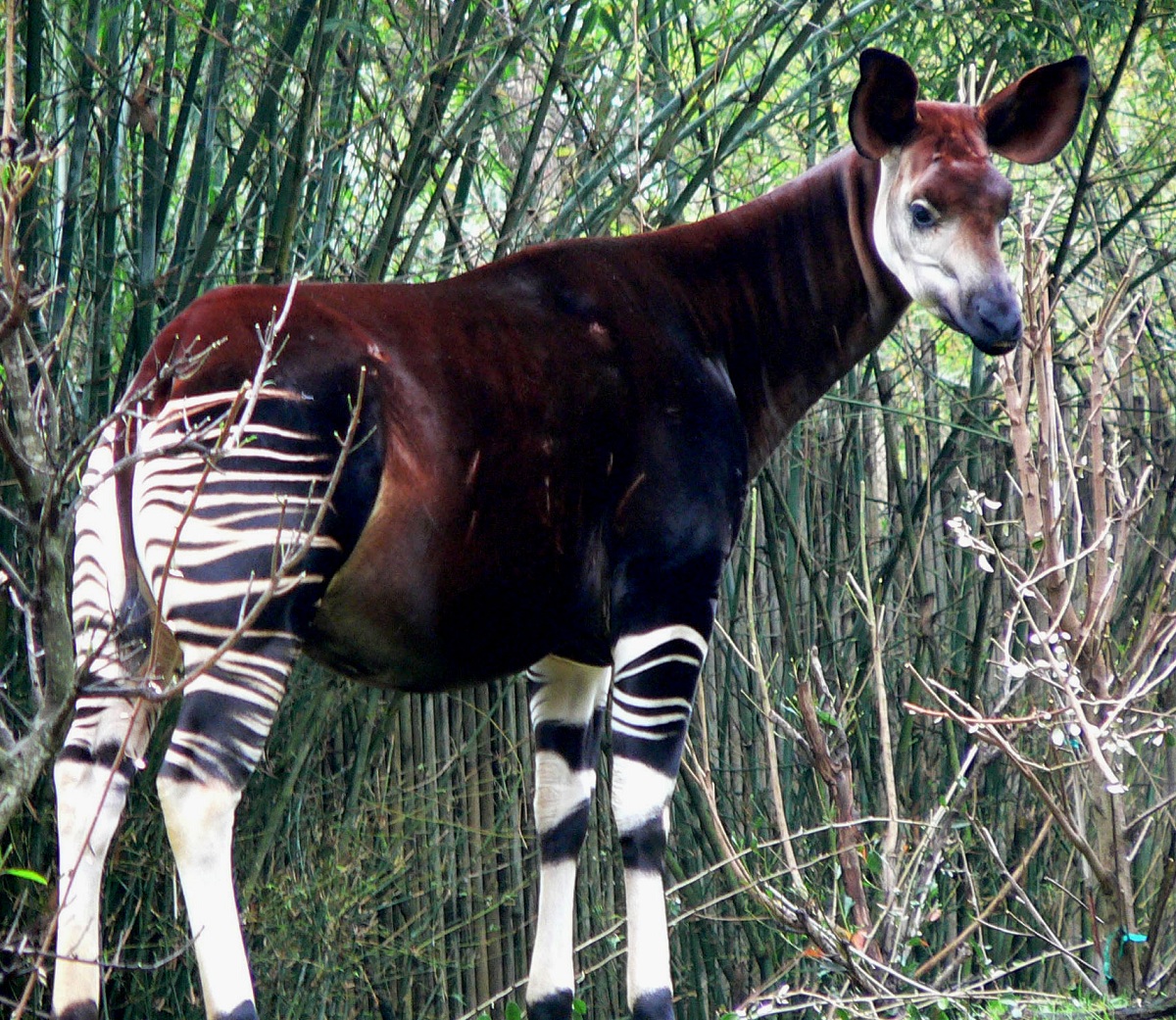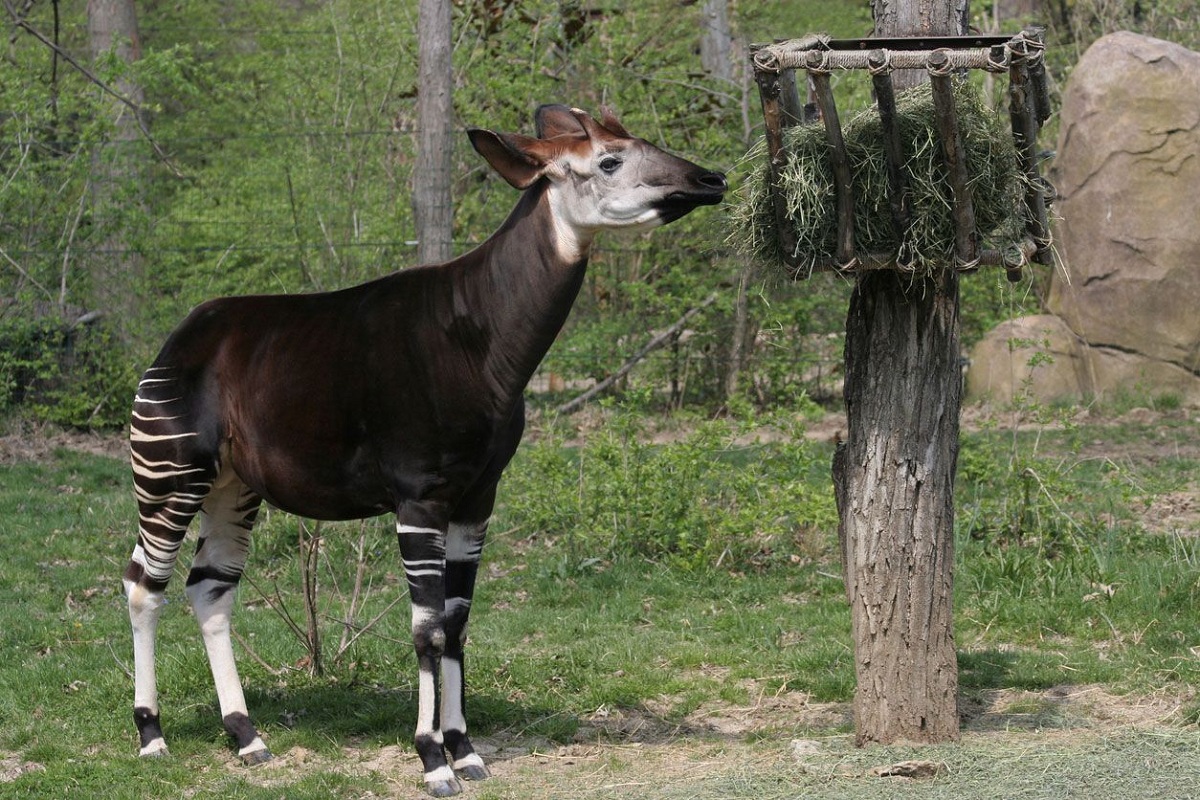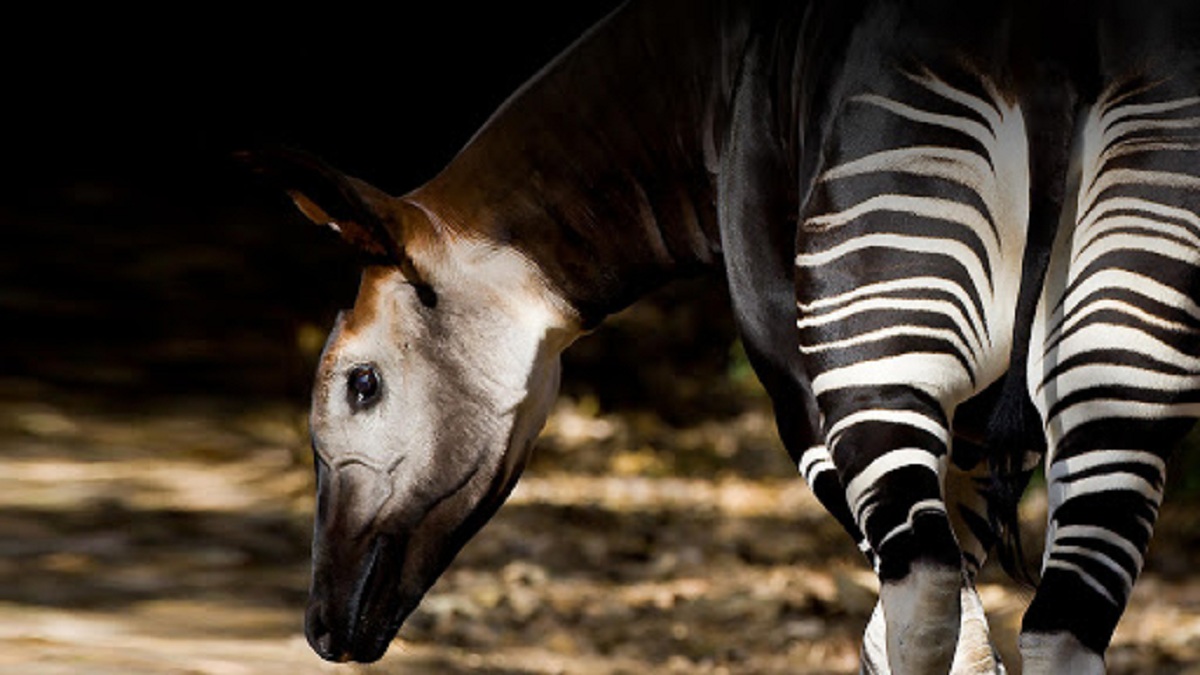
One of the animals that is related to giraffes is the okapi. Sometimes it seems that it is an animal that is the result of human experiments, but it is an animal that belongs to the Giraffidae family and is the closest living relative to the giraffe. We can also see that it has some characteristics and physical traits in common with fiber. This makes it a very interesting animal from a biological and curious point of view.
Therefore, we are going to dedicate this article to tell you all the characteristics, habitat, feeding and reproduction of the okapi.
Key features

This animal mix between zebra and giraffe is quite difficult to study since it has a generally elusive behavior. This difficulty makes it more difficult to obtain information about it. If we analyze the body completely we see that both the shape of the body like the head reminds us of a giraffe. However, their legs and neck are shorter than those of giraffes.
On the head we can see how two ears that have a good movement stand out. They use these ears to be able to alert themselves to predators. It has two small horns that are covered by hairs and that scientists have not found any use for. They are not horns used for courtship or defense. Its trunk is robust and has a slight slope at the back similar to giraffes. Its fur is reddish or salmon-colored, the legs and legs where it has black and white stripes simulating the color and color pattern of the zebra.
Being a herbivorous animal, it has a very long and prehensile tongue of a black color. The tongue has it adapted in such a way that it is able to take the leaves of trees and bushes. The tongue is so long that the Okapi can perfectly clean its ears with it. Its length is usually between 2.15 meters and its weight is around 250 kg.
Although its coat is completely different, the appearance is similar to that of a small giraffe.
Okapi behavior and reproduction

This animal generally has solitary behaviors and its activities are nocturnal. Sometimes we can see small groups of these animals for the time of reproduction. The female is only capable of giving birth to a single young. It usually takes place in late summer or early fall. Gestation lasts about 15 months. Since the mother is only capable of giving birth to a single calf and the gestation period is quite long, the reproduction rate of these animals is small.
Young okapis are not very different from the female that feeds them. This means that when the mother of a calf dies it is easily adopted by another okapi female. This is one of the adaptations that this animal has had due to the slowness of its reproduction. In the absence of a relative, any other female can act as a mother.
The only predator of the Okapi is the leopard and the human being. For both the human being and the leopard, the okapis will face death in order to defend the young. As is to be expected, given that they have quite a reduced reproduction, it is essential that the parents can take care of their young.
Females reach sexual maturity from two years of age. The males, however, must wait a few more years. This animal has highly developed senses of smell and hearing. They use them, above all, to monitor the possible presence of a predator in their habitat. Since its diet is herbivorous, it does not need hearing or smell to search for its food. They are animals that hardly use their vocal system. This gives the feeling that they are dumb animals. The only thing that can be heard from okapis is the young when they call their mothers or during courtship prior to mating.
Food and habitat

The habitat of these giraffe relatives is in the Democratic Republic of the Congo, in Africa. This habitat is known since they do not live in another part of the world in a state of freedom. They can be seen in captivity in many other places on the planet such as zoos in many cities.
These animals live in dense jungles when they are in the wild. These jungles are from the north of the African country in an area of approximately 244 thousand square kilometers. Unlike their relatives the giraffes, these animals do not live in the savannah. It is one of the reasons why the evolution of these animals has not made them as tall as giraffes. This is because to be able to move in the jungle to be so tall would be an evolutionary disadvantage.
A rather curious and relevant fact is that he formerly lived in Uganda. However, due to their continuous predation, this area became extinct.
With regard to its diet, we have already said that it is a herbivorous mammal. Their diet is based on vegetation. Specifically, it feeds on the leaves, shoots and stems of the trees and shrubs of the forests where they live. They can pick up some branches and pull them thanks to their strong tongue. They are capable of pulling them to be able to lower them from greater heights. This is how they can find the most tender leaves.
Not only, in the foliage of trees and shrubs, although that is the main food. They also tend to eat plants found in jungles on the ground. Scientists think that they feed on more than 100 different species of plants, as well as some fruits and even mushrooms.
Okapi in danger of extinction
Currently the okapis a species that is threatened since the pollution of its population is decreasing. In a very few years it could become in danger of extinction and become extinct in a few decades.
Among the main causes for which Okapi is threatened are the following:
- Mining that destroys its natural habitat
- Deforestation
- Poaching
- Situation of armed conflict
I hope that with this information you can learn more about the Okapi and its characteristics.